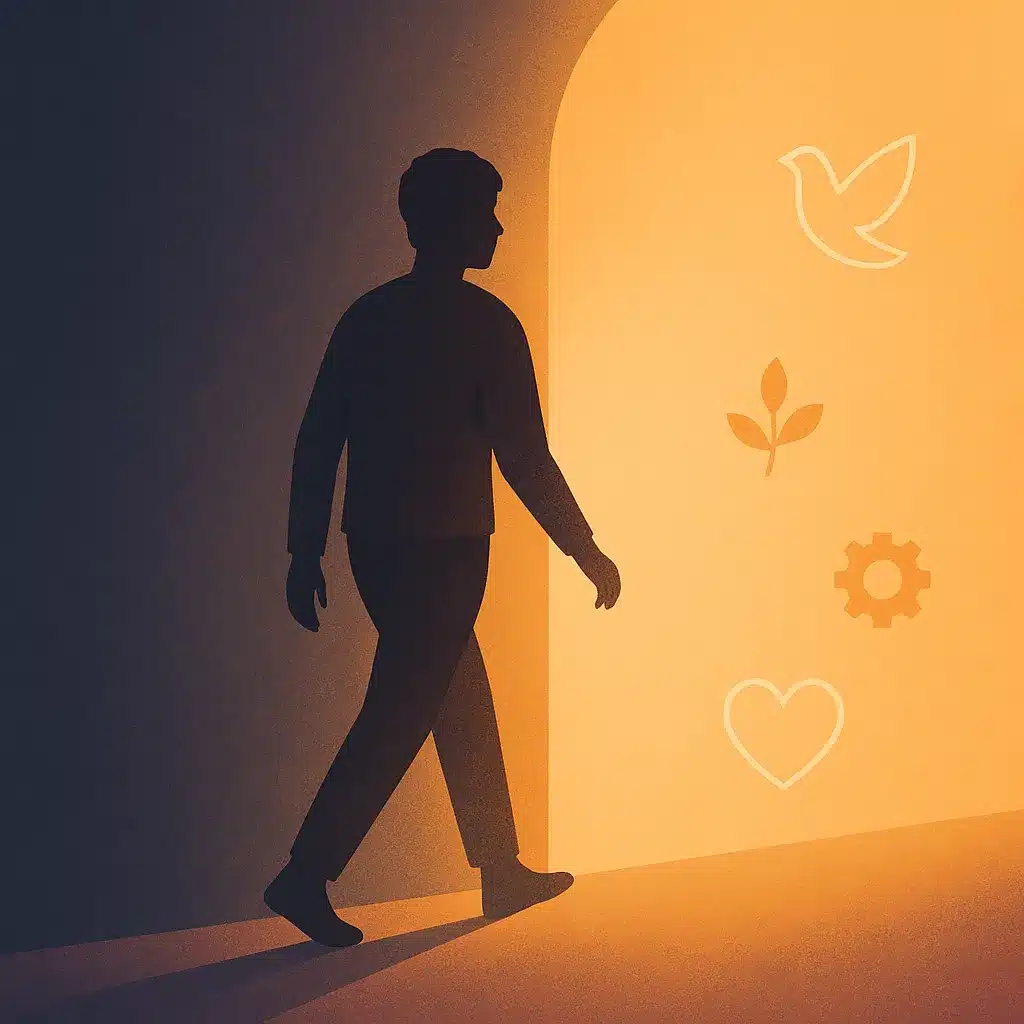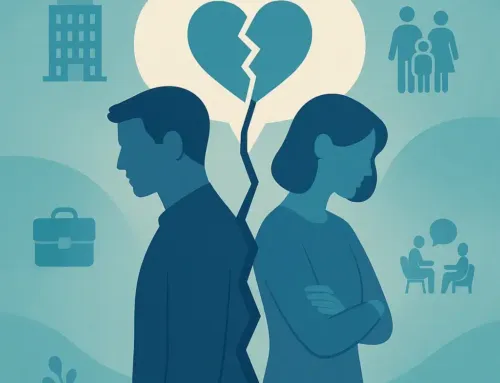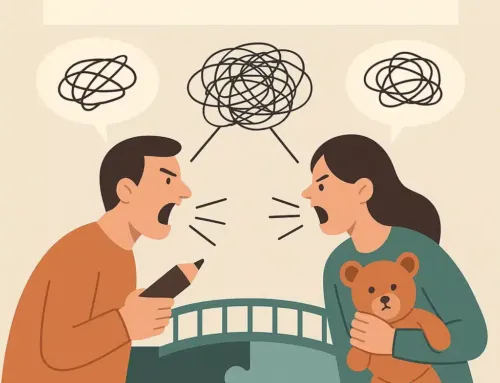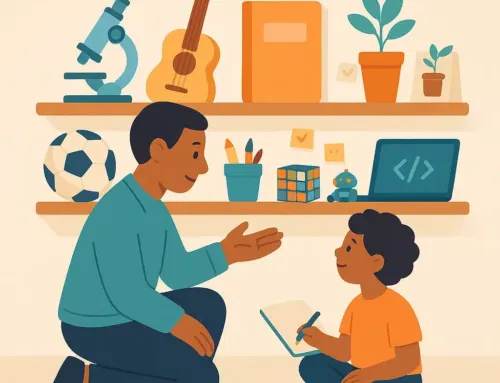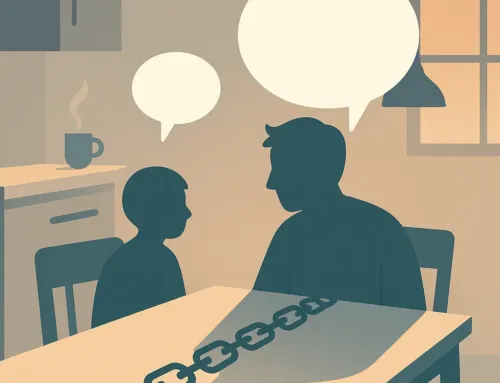
Approx. read time: 7.3 min.
Post: Happy Being Unhappy 15 Ways It Quietly Ruins Growth
Feeling “happy being unhappy” happens when discomfort becomes familiar. Over time, that baseline quietly shapes how you think, love, and grow. In this guide, you’ll learn what happy being unhappy really means, how it corrodes intimacy and progress, and exactly how to reset your emotional “normal” toward peace, trust, and growth.
🧭 What “happy being unhappy” really means
When happy being unhappy sets in, you’re not chasing misery—you’ve simply adapted to it. Your brain picks “predictable discomfort” over “unknown peace.” That familiarity can feel safer than change. This guide will help you notice those patterns and choose a healthier baseline.
Quick signs:
-
You distrust calm because it feels “too quiet.”
-
You expect disappointment and pre-grieve outcomes.
-
You stay where it hurts because leaving feels unsafe.
-
You downplay wins and brace for the fall.
🧠 When discomfort becomes home (and why that happens)
Under long stress, the brain learns that effort doesn’t change outcomes—psychology calls this learned helplessness. It’s a survival response, not a flaw. But left unchecked, it turns into a habit of not trying, even when you do have options. APA Dictionary
You may also feel anhedonia—less joy from things that should feel good—which can reinforce the belief that “happiness isn’t for me.” National Institute of Mental Health+2National Institute of Mental Health+2
🧩 Why familiar pain can feel safer than change
The brain loves patterns. If chaos was normal, your nervous system may read calm as “suspicious.” That’s how happy being unhappy becomes self-reinforcing: your body prefers the known, even when it hurts. The fix isn’t to “tough it out”—it’s to teach your nervous system that safety, care, and stability are normal again (small, repeated exposures to calm and connection).
💔 Relationships built on dysfunction
If your baseline is chronic unease, you may misread drama as passion and distance as safety. Common patterns:
-
Attracting inconsistent or emotionally unavailable partners.
-
Confusing intensity for intimacy.
-
Sabotaging steady affection because it feels “too good to be true.”
-
Cycling through the Four Horsemen—criticism, contempt, defensiveness, stonewalling—which predict relationship breakdown. Gottman Institute
🚩 12 signs you’re happy being unhappy in love
-
You pick partners you must “win over.”
-
You test love by withdrawing.
-
Calm feels boring; chaos feels alive.
-
You keep score to stay “safe.”
-
You expect abandonment, so you leave first.
-
Compliments make you uncomfortable.
-
You fear being truly known.
-
You “fix” partners to avoid fixing your patterns.
-
You apologize for having needs.
-
You distrust kindness.
-
You replay old fights in your head.
-
You believe “love hurts”—and make choices that prove it.
🛡️ Self-sabotage that looks like self-protection
Avoiding opportunities, ghosting healthy people, procrastinating on goals—these can be protective habits learned during hard seasons. But today they’re costly. Naming and challenging automatic negative thoughts (ANTs) is a powerful first step. Harvard Health
🧱 Emotional isolation and the intimacy gap
If you’re happy being unhappy, vulnerability feels risky. So you armor up: humor, sarcasm, silence, busyness. Partners feel shut out. Distance grows. Repair gets harder. The goal isn’t “be open 100%”—it’s gradual openness with clear boundaries and simple, regular bids for connection.
🪟 Limiting beliefs that cap growth
-
“This is just who I am.”
-
“Nothing ever works out for me.”
-
“People always leave.”
-
“Happiness won’t last.”
Beliefs aren’t facts. They’re predictions your brain makes to feel safe. Updating predictions with real-world “disconfirming experiences” (safe conflict repair, kept promises, consistent routines) lowers the ceiling on fear and raises the ceiling on growth.
🧪 10-question self-check: Is your baseline stuck?
Answer yes/no:
-
Calm makes me uneasy.
-
I expect things to go wrong.
-
I downplay good news.
-
I keep distant “just in case.”
-
I end things before they end me.
-
I look for flaws when I feel close.
-
I struggle to ask for help.
-
I re-create the same fight in new relationships.
-
I feel guilty when I rest.
-
I don’t trust happiness to last.
4–6 yes: your baseline likely leans toward vigilance.
7+ yes: consider support to safely retrain your nervous system.
🔄 How to get uncomfortable with unhappiness (mindset reset)
To break happy being unhappy, you’ll need short, repeatable wins that teach your body “calm is safe” and your mind “good can stay.”
Core shifts:
-
Peace is not boring—it’s bandwidth.
-
Kindness isn’t weakness—it’s courage.
-
Stability isn’t a trap—it’s freedom to grow.
🧰 10 micro-habits that move your baseline (start small)
-
Name the state: “I notice tension. I’m safe.”
-
2-minute calm reps: inhale 4, exhale 6, twice a day.
-
One daily joy rep: tiny pleasant activity, same time daily.
-
Accept one compliment without deflecting.
-
Bid for connection: send a warm text; ask one curious question.
-
Repair fast: “I’m sorry. I was defensive. Can we try again?” (Four Horsemen antidotes help here.) Gottman Institute
-
Friction logs: note the moment you nearly self-sabotaged; write one alternative action.
-
Win the evening: lights down, devices out, stretch 5 minutes.
-
Yes to rest: schedule it like a meeting.
-
Track proof: each night, list two ways today was safe or kind.
❤️ Relationship tune-ups while you heal
-
Swap criticism for a complaint: “When X happens, I feel Y, could we try Z?”
-
Replace contempt with curiosity: ask for the backstory, not the “gotcha.”
-
Drop defensiveness: reflect what you heard before you respond.
-
Stop stonewalling: take a 20-minute cool-down and return to repair.
These Four Horsemen antidotes are evidence-based and teach your nervous system that connection can be safe. Gottman Institute
🧑⚕️ When to get help (and what to ask for)
If anhedonia, numbness, or stuckness persist, a therapist can help you retrain patterns and rebuild pleasure and motivation safely (CBT, ACT, EFT, and skills for cognitive distortions and conflict repair are all helpful). Harvard Health+1
Ask:
-
“Can we map my triggers, safety plans, and specific repair scripts?”
-
“Can we track one behavior weekly to measure change?”
-
“Can we practice antidotes to criticism, contempt, defensiveness, and stonewalling?”
🧑💻 If you’re a high-functioner who still feels flat
You can be productive and still be happy being unhappy. Watch for “quiet quitting on yourself”: doing the minimum in your emotional life, not just your job. Re-invest in two tiny joy reps daily and one relationship bid—every single day.
🧱 Common obstacles (and how to beat them)
-
“Calm feels fake.” Try “calm snacks” (2 minutes) rather than long sessions.
-
“Good won’t last.” True—but it can return. Train return speed, not permanence.
-
“I don’t deserve it.” Worth doesn’t grow from exhaustion; it grows from honesty and repair.
-
“I’ll be judged.” Practice with safe people first.
❓ FAQs
Q1. What does “happy being unhappy” actually mean?
It’s when your brain treats familiar discomfort as safer than change, so you keep choosing it—often without noticing.
Q2. How do I know if I’m stuck here?
If calm makes you uneasy, you expect things to go wrong, and you push away steady affection, you may be happy being unhappy.
Q3. Can this be connected to trauma or long stress?
Yes. Prolonged stress can train helplessness and blunt reward, making joy feel distant until you retrain patterns. APA Dictionary+1
Q4. What breaks the pattern fastest?
Tiny, daily “calm reps,” quick repairs after conflict, and replacing ANTs with realistic thoughts. Harvard Health
Q5. How do I stop ruining good relationships?
Use the Four Horsemen antidotes: complain (don’t criticize), show respect, take responsibility, and pause/return instead of stonewalling. Gottman Institute
Q6. Is it okay to ask for help?
Absolutely. Therapy can help with skills, scripts, and nervous-system safety, especially when joy feels out of reach. National Institute of Mental Health
Q7. What if my partner is the one who’s stuck?
Model antidotes, set clear boundaries, and invite joint work (e.g., one repair ritual a day). If contempt is chronic, prioritize safety and support. Gottman Institute
Q8. Can happiness become my new “normal”?
Yes—through frequent, small, safe experiences that teach your brain calm is reliable and connection is safe.
✅ Conclusion: Choose a safer “normal”
Being happy being unhappy wasn’t a choice—it was protection. But you can choose again. Trust can be relearned. Calm can feel safe. Love can become steady. Start with one tiny habit today, repair one conversation, accept one kindness without deflecting—and keep a nightly proof log so your brain sees the change.
Related Videos:
Related Posts:
Rising from the Ashes: Why I Chose to Rebuild Myself Through Advocacy
5 Powerful Steps to Cut Off Toxic Parents While Honoring Yourself
Kingston Police’s Drone Surveillance for Distracted Driving Sparks Legal and Privacy Concerns


